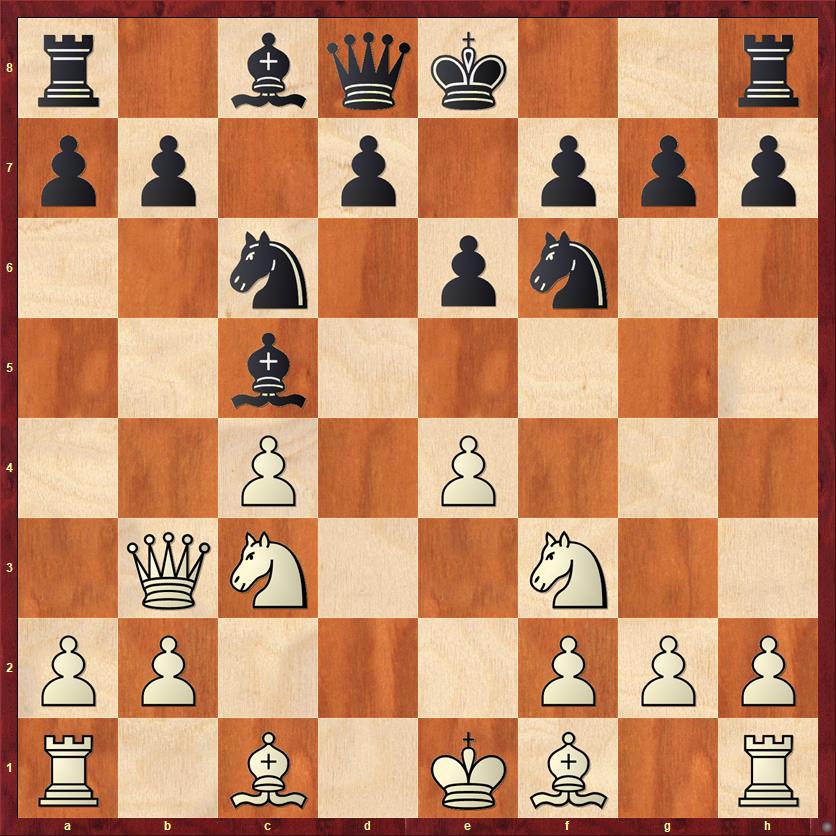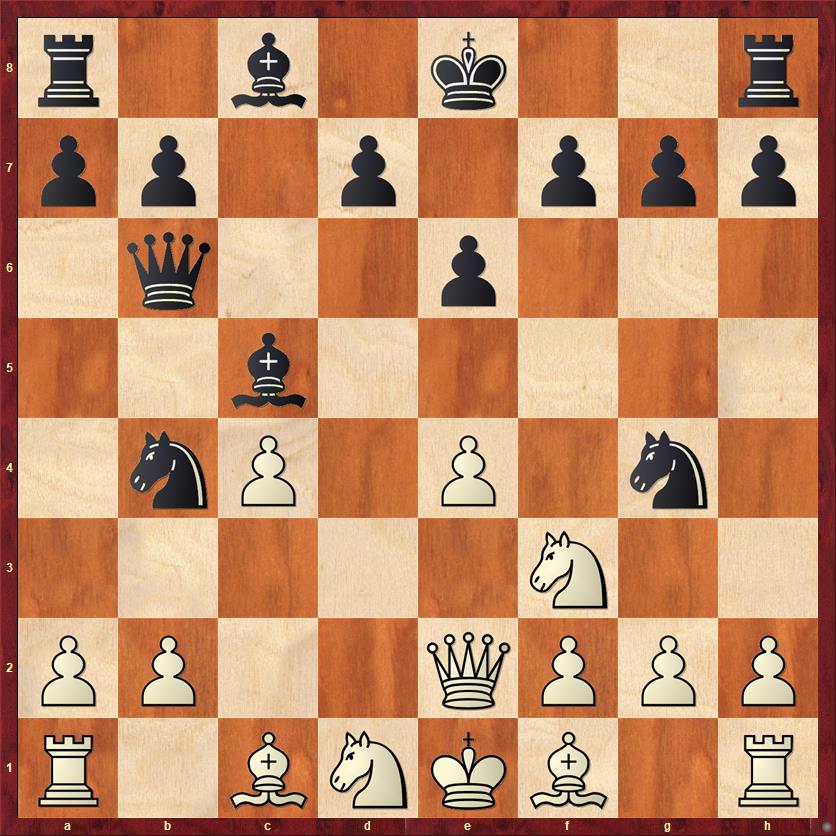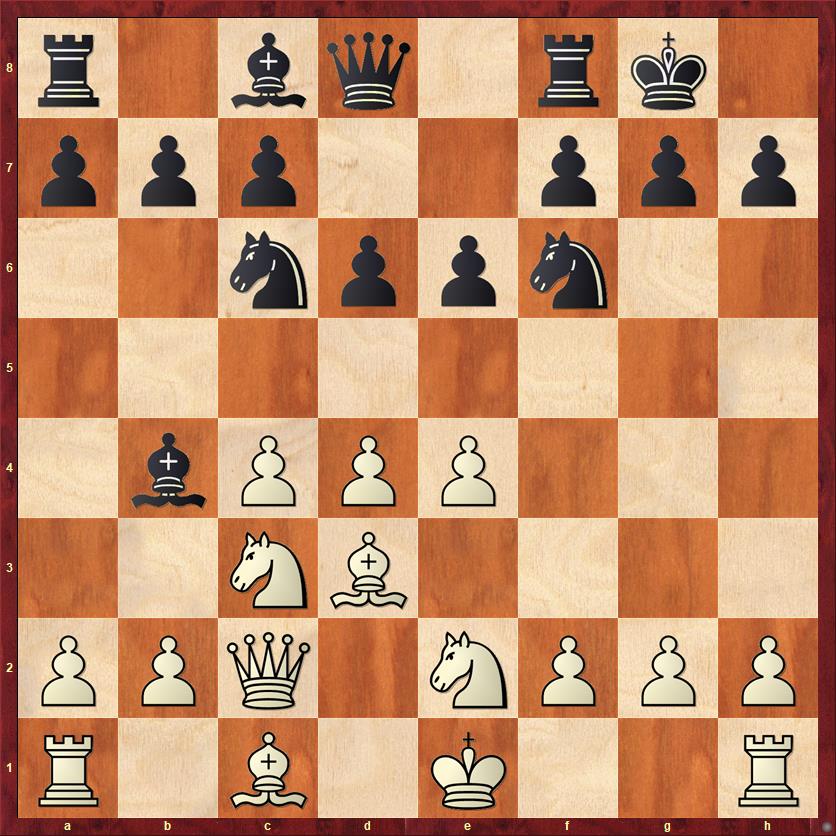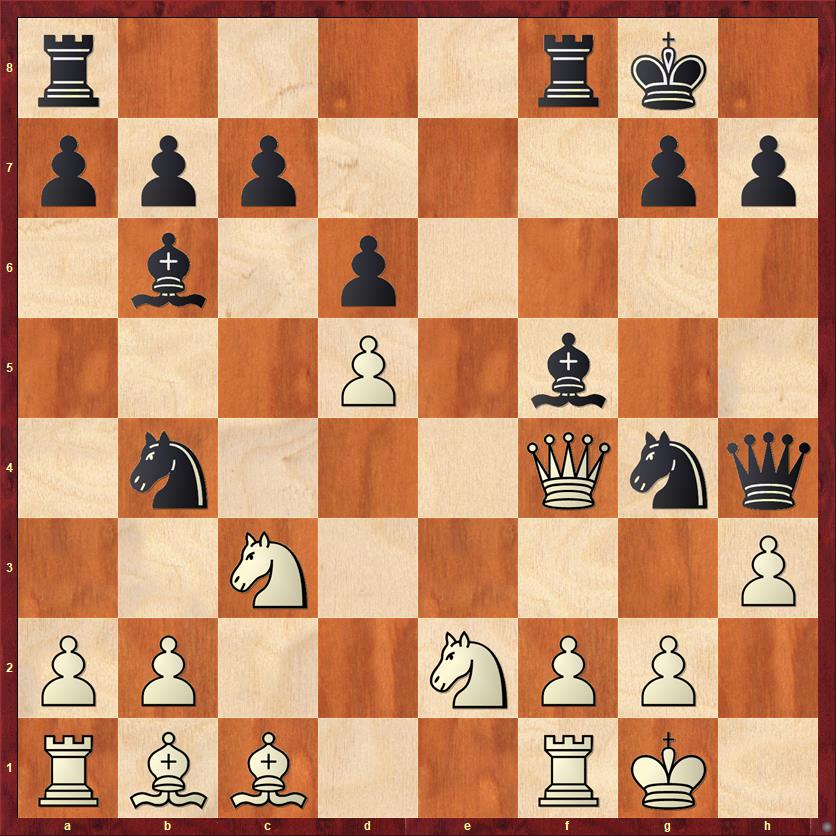When you play the move 1. d4 as White, you’re generally saying that you want the game to be a sumo match rather than a sword fight. You’re tired of all the sharp tactics of 1. e4, whether it’s the Sicilian Defense or the open games. You want to just get a solid, safe space advantage and push your opponent off the board.
And yet… catastrophes can happen in d-pawn openings, too! I recently got a reminder of this when I won a game against my student from the Aptos Library Chess Club, Atlee, in 13 moves. If you don’t think it’s possible for White to lose in 13 moves in a d-pawn opening, think again! At first I thought the game was kind of a crazy fluke, but then Gjon Feinstein showed me a game where the same thing happened to none other than Magnus Carlsen. Okay, it didn’t happen quite as fast — he resigned on move 21 instead of move 13 — but still the two games have some remarkable similarities.
First, let’s look at my game, played last week:
Atlee — Dana
1. d4 Nf6 2. c4 e6 3. Nc3 Bb4 4. Qb3 …
Okay, one difference between the two games is that Atlee doesn’t know opening theory. After the game I explained to him that 4. Qc2 is generally preferred here because the queen is less vulnerable to attack. When you move the queen to b3, you can be almost sure that you are going to have to move it again. Also, the queen on c2 can defend f2… something that hardly ever matters, but does matter in this game.
4. … c5 5. dc Bxc5 6. e4?! …
One of the things that I think Atlee needs, if he wants to move up from his present 1500-ish strength, is to develop a sense of danger. I think it’s hard for players at that level to tell the difference between serious weaknesses, or serious threats, and not-so-serious weaknesses. In this position, with Black’s bishop already bearing down on f2, I would not even consider playing 6. e4. It’s too ambitious and too weakening. On the other hand, I like the fact that Atlee is playing ambitious chess. It’s something that I encourage him to do. What can I do as a teacher? There’s no way I can make a list of positions and say to him, in these positions play ambitiously and in those positions play carefully. All I can do, I guess, is show him that you need to be aware of both possibilities and choose one for a reason. Here I don’t think that Atlee realized what he was choosing.
6. … Nc6 7. Nf3 …
One problem leads to another. Atlee develops his knight to the natural square but the f2 pawn is getting harder and harder to defend. White could play 7. Be2 here, to keep my knight out of g4, but that is pretty unappealing after 7. … Nd4.

FEN: r1bqk2r/pp1p1ppp/2n1pn2/2b5/2P1P3/1QN2N2/PP3PPP/R1B1KB1R b KQkq – 0 7
7. … Ng4
I felt guilty about playing this move, because I’m violating the opening principles that I have taught to Atlee. You’re not supposed to move a piece twice until you’ve finished developing, right? But every principle in chess has to be considered provisional, subject to the concrete considerations of your current position. Here the weakness of f2, and the contortions White has to go through to keep that pawn defended, justify Black’s aggressive play.
8. Nd1 Bb4+ 9. Nc3? …
White should play 9. Bd2 Bxd2 10. Nxd2, when he’s still okay.
9. … Qb6 10. Qc2 Bc5 11. Nd1 …
All of this back and forth is kind of amusing, but White has been treading water while I have been gradually improving my position.
11. … Nb4 12. Qe2 …
On the main alternative, 12. Qd2, I was planning to play 12. … Nxa2! 13. Rxa2 Nxf2! and White can’t take because he loses his queen. (14. Nxf2 Bb4.)

FEN: r1b1k2r/pp1p1ppp/1q2p3/2b5/1nP1P1n1/5N2/PP2QPPP/R1BNKB1R b KQkq – 0 12
12. … Qa5! 13. White resigns
Just like that, the game is over! I always feel as if Atlee is a little bit too quick to resign against me — he has too much respect for his teacher — but here it’s fully justified. If 13. Bd2 or 13. Nd2, 13. … Nc2+ is a stunning smothered mate. The only move I could see to keep the game going is 13. Kd2, but Atlee correctly pointed out that 13. … Nxa2+ 14. Nc3 Bb4 is lights out. White is not able to exploit the pin on the a2 knight, and Black will break through on c3 or f2 or everywhere at once.
After this game I thought it was sort of a fluke, until Gjon showed me the next game! Magnus Carlsen experiences a similar catastrophe against Vladimir Kramnik.
Magnus Carlsen — Vladimir Kramnik, Melody Amber 2009
1. d4 Nf6 2. c4 e6 3. Nc3 Bb4 4. Qc2 …
This game comes with a little bit of an asterisk because it was a blindfold game, so we’re probably not seeing Carlsen at his full strength. On the other hand, Kramnik was blindfolded too, and it didn’t seem to affect him at all!
4. … O-O 5. e4 …
Just as in my game with Atlee, we see White playing this ambitious, space-grabbing move. Here it’s not a mistake; it is one of several playable moves. However, I can say for certain that Kramnik’s move 4. … O-O was played with the intention of provoking White to play 5. e4.
5. … d6 6. Bd3 Nc6 7. Nge2 …

FEN: r1bq1rk1/ppp2ppp/2nppn2/8/1bPPP3/2NB4/PPQ1NPPP/R1B1K2R b KQ – 0 7
7. … Ba5!
Perhaps this was already established theory at the time — I don’t know — but I really like it. It’s a bit of a surprise, because in the Nimzo there usually isn’t much a future for the bishop on a5. But the point is that Black is going to get pressure on the weak d4 pawn very quickly. If he can induce White to play Be3, then … Ng4 will force a favorable trade of knight for bishop.
8. O-O Bb6 9. d5 …
Now Kramnik’s bishop on b6 has a very bright future.
9. … Nb4 10. Qd2 ed 11. cd? …
According to the computer, this is when Carlsen goes wrong. If he had played 11. ed, then the line Kramnik played in the game (11. … Ng4 12. Bb1 Qh4 13. Qf4) would not have been so strong because Black does not have a way to get his other pieces (especially the king rook and queen bishop) into the attack. You might ask, “Why didn’t Carlsen see this?” Well, he was blindfolded! But more to the point, 11. ed is just unappetizing because the pawn structure favors Black, and White has no attacking prospects.
11, … Ng4
Just as in my game with Atlee, the knights come to g4 and b4. It seems as if they should be vulnerable there, but they create enough chaos that White isn’t able to drive them away.
12. Bb1 …
For example, if White plays 12. h3 to kick the knight away, then 12. … Ne5 13. Bb1 Bxh3! snags a pawn. (14. gh?? Nf3+.) This is a very standard trick when the king is at g1 and the queen is on d2, but it still always catches me by surprise.
12. … Qh4 13. Qf4 f5
Unlike the line I mentioned after White’s 11th move, this move is very strong here because it opens up the f-file, where White’s queen sits very uncomfortably. Probably Carlsen should try to trade the queens off with 14. Qg3, but instead he pours oil on the flames.
14. ef Bxf5 15. h3 …
In retrospect this move was suicidal, but given that it was a blindfold game it’s kind of reasonable — after all, it looks as if Magnus is winning a piece.

FEN: r4rk1/ppp3pp/1b1p4/3P1b2/1n3Qnq/2N4P/PP2NPP1/RBB2RK1 b – – 0 15
Kramnik now ends the game in very stylish fashion.
15. … Bxf2+!
Just as in my game with Atlee, it’s the weakness at f2 that causes White’s position to fall apart. Of course, 16. Rxf2 loses to 16. … Qxf2+ 17. Qxf2 Nxf2 18. Kxf2 Bxb1+.
16. Kh1 Bd7 17. Qg5 …
Belatedly trying to trade queens, but Kramnik is ready with a sensational answer.
17. … Bc5!
It’s back-rank mate time! The point is 18. Qxh4 Rxf1+ followed by mate next move. Carlsen is able to delay the inevitable but he can’t stop it.
18. Rxf8+ Rxf8 19. Ng1 Rf1 20. Bxh7+ Kh8!
No more checks.
21. White resigns
Moral: Every 1. e4 player knows that f2 (and f7) are important targets that have to be safeguarded in the opening. Playing 1. d4 might give you a false sense of security. But even in a d-pawn opening, if you aren’t paying attention to your f-pawn, the punishment can be drastic!



{ 1 comment… read it below or add one }
I liked the discussion about a teacher’s quandary of when breaking the opening rules make sense. A new student of mine – new to lessons and pretty much to the game – has absorbed the King Safety opening principle too well, and castles as early as possible in every game! Thus, “castling is good for king safety” needs to be shaded further to take into account a) is there a better move than castling here? and b) am I showing my cards too soon by giving my opponent a target? Of course, nothing revolutionary here, but one needs to be able to distinguish between rules of thumb and iron-clad laws, if indeed there are any in chess.